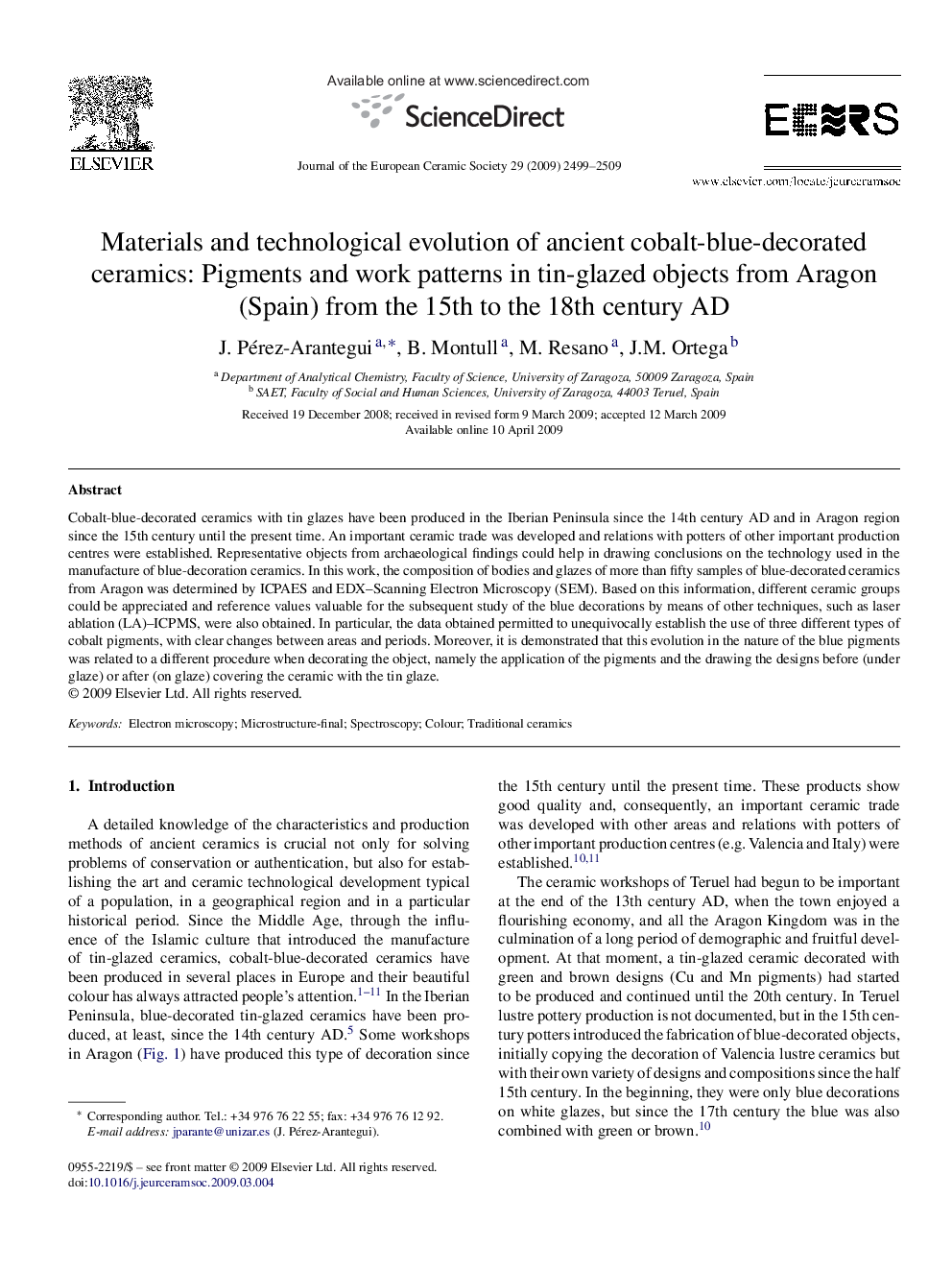| Article ID | Journal | Published Year | Pages | File Type |
|---|---|---|---|---|
| 1477308 | Journal of the European Ceramic Society | 2009 | 11 Pages |
Cobalt-blue-decorated ceramics with tin glazes have been produced in the Iberian Peninsula since the 14th century AD and in Aragon region since the 15th century until the present time. An important ceramic trade was developed and relations with potters of other important production centres were established. Representative objects from archaeological findings could help in drawing conclusions on the technology used in the manufacture of blue-decoration ceramics. In this work, the composition of bodies and glazes of more than fifty samples of blue-decorated ceramics from Aragon was determined by ICPAES and EDX–Scanning Electron Microscopy (SEM). Based on this information, different ceramic groups could be appreciated and reference values valuable for the subsequent study of the blue decorations by means of other techniques, such as laser ablation (LA)–ICPMS, were also obtained. In particular, the data obtained permitted to unequivocally establish the use of three different types of cobalt pigments, with clear changes between areas and periods. Moreover, it is demonstrated that this evolution in the nature of the blue pigments was related to a different procedure when decorating the object, namely the application of the pigments and the drawing the designs before (under glaze) or after (on glaze) covering the ceramic with the tin glaze.
